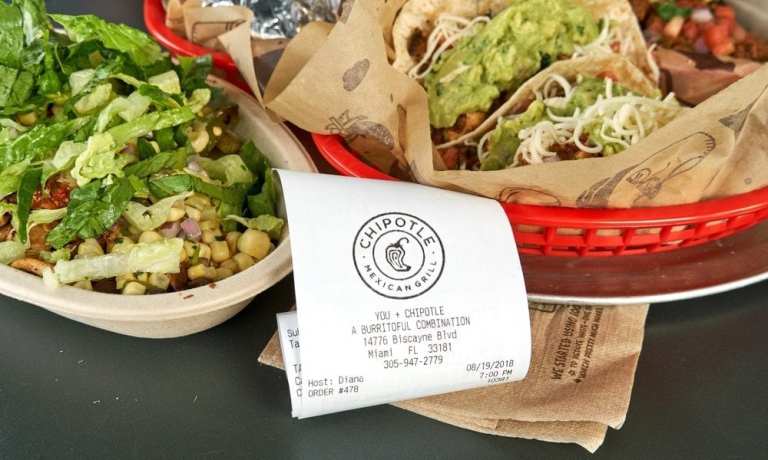
Fast-casual chain Chipotle Mexican Grill became one of the first major restaurant brands to pioneer the mobile ordering experience in 2008. Since then, it’s invested in AI-powered ordering, as well as voice-ordering via Amazon Alexa, and forged third-party delivery partnerships. In the new Order To Eat Tracker, Chipotle’s VP of Digital Strategy and Product Nicole West explains the thinking behind the chain’s digital innovations, directed at both the front- and back-of-house operations.
Fast casual chain Chipotle Mexican Grill became one of the first major restaurant brands to pioneer the mobile ordering experience in 2008. The company has since expanded its digital ordering portfolio to include artificial intelligence (AI)-powered phone ordering, drive-thru pickup lanes and a reordering feature through Amazon’s Alexa.
Recent data indicates that digital ordering capabilities are a key ingredient in Chipotle’s business model. Digital sales helped the company’s revenue jump by 15 percent in third quarter 2019, and its digital orders rose by 88 percent from the same quarter the previous year. Such sales now represent 18 percent of the firm’s total business.
Investing in digital ordering experiences is now a core part of the company’s business model, according to Nicole West, Chipotle’s vice president of digital strategy and product. West recently spoke with PYMNTS about how the chain supports ordering innovations and examines customers’ preferences to improve future experiences.
“In addition to menu innovation, digital innovation is core to the experience we are looking to deliver to our customers,” West said.
Real Ingredients Meet AI
Chipotle has rolled out several AI-powered digital ordering solutions over the past year, and its most recent innovation is an Amazon Alexa skill that enables customers to reorder their past meals via voice command. Users can download the Alexa app and activate the skill to place delivery orders on their favorite meals.
The chain also expanded its phone-based voice assistant ordering service to approximately 2,500 locations nationwide. The system prompts customers to place their orders and asks clarifying questions or suggests optional ingredients. Customers can then pay for their food via the system, which saves customers’ preferences for future orders.
West said these types of AI-powered enhancements can resonate positively with customers.
“I think customers leave those experiences thinking, ‘Wow, that was really easy and pretty cool! I am able to get Chipotle ordered exactly how I want it, really quickly,’” West said. “When ordered the exact same way the next time, [the system is] already smarter and is able to interpret exactly what they want and get it right without question. Customers have fun with it and they love the ease.”
She added that AI enables Chipotle to provide more convenient experiences, which are central to its digital ordering strategy. Offering a range of ordering methods ensures that every point of engagement is as seamless as possible.
“I think customers expect to be able to engage with the brand on their terms and to be able to order exactly what they want, at the time they want it [and for it] to arrive in front of them by the means they choose,” she said.
How Digital Ordering Drives Labor Organization
West explained that Chipotle addresses new technological ordering capabilities with a two-pronged approach. The first step involves utilizing a customized digital platform, which enables the quick-service restaurant (QSR) to add customer-facing ordering solutions as long as they follow specific parameters and standards.
The second step requires ensuring that Chipotle staff can handle the influx of both digital and in-person orders. The chain established new “make lines” to process digital orders, and West said the lines would focus on the accurate and efficient fulfillment of digitally initiated sales.
“Once volume started to pick up, it became evident that the future of the digital business was going to continue to grow,” West said. “We needed to make sure that our [operations] team was able to handle that with ease.”
Enhancing Delivery Experiences
Orders assembled by the second Chipotle make line are placed on pickup shelves for customers who phoned in or used their mobile devices to make purchases. This second make line is also critical to ensuring Chipotle can quickly fulfill delivery orders and hand them off to third-party services like DoorDash and Postmates. West said Chipotle observed increased demand for delivery in various regions across the U.S. when it first began partnering with delivery providers in 2015.
“Our customers have been asking for delivery in more and more places,” she said. “We’re fortunate because our ops teams are well set up with a make line to execute on delivery orders. We’ve been able to give customers exactly what they want from that delivery experience.”
Chipotle’s digital strategy has addressed significant shifts in how the chain handles back-end operations, how customers place orders and how the company fulfills delivery requests. New tools and innovations like AI, delivery partnerships and upgraded operations management methods are proving to be welcome additions to the chain’s digital menu.